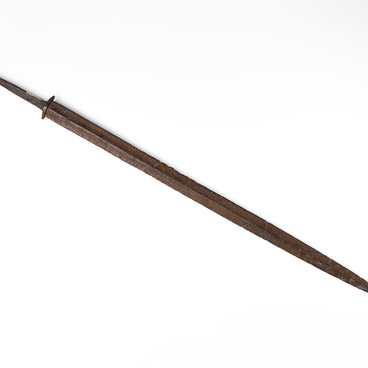A small dagger with a butterfly-shaped cross-guard and a ribbed hilt was made of bronze. The craftsman gave the pommel of the handle a mushroom shape. To this day, the dagger has been preserved in its entirety, acquiring a patina. This weapon has been dated to the period from the 4th to the 3rd century BCE. The dagger was found among the burial equipment in the mound during excavations in the city of Sayanogorsk from 1992 to 1996. The research was carried out by the Beya archaeological expedition.
The shape of such daggers spread everywhere in the vast Eurasian steppes from the 6th to the 3rd century BCE. The guard of the dagger, which the craftsman cast in the form of open butterfly wings, was named precisely for this similarity — butterfly-shaped. The researchers believe that it is a further development of rounder and more compact heart-shaped cross-guards.
Over time, the rounded ends of the guard sharpened, moved apart to protect the fingers, and the wings stretched out more and more from the blade. They started to resemble bird wings. In academia, such guards are called wing-shaped. These cross-guards protected the hand well, a counter blow easily slipped along the edges of their rounded and apart ends.
Daggers of the first half of the Tagar era were divided into two main types: with “spikes” and with a butterfly-shaped cross-guard. The first type was widespread in the Tagar archaeological culture in the 7th and early 6th centuries BCE. It undoubtedly originated from the Karasuk daggers with “spikes” (Karasuk culture of the 13th–8th centuries BCE). The second type of Tagar daggers appeared in the Minusinsk Basin later than the first one, in the 6th century BCE, and existed until the Tashtyk epoch. It produces a series of mixed forms with daggers of the first type.
The Podgornov daggers
were distinguished by plate shapes with a curved rim, a teardrop-shaped or
round hole in the end of the grips. Later Saragashen daggers had an expanding
chiseled or looped grip with a thin ring. The cross-guards of the Podgornov
daggers had various shapes, the Saragashen ones were distinguished by guards in
the form of narrow relief tendrils.





